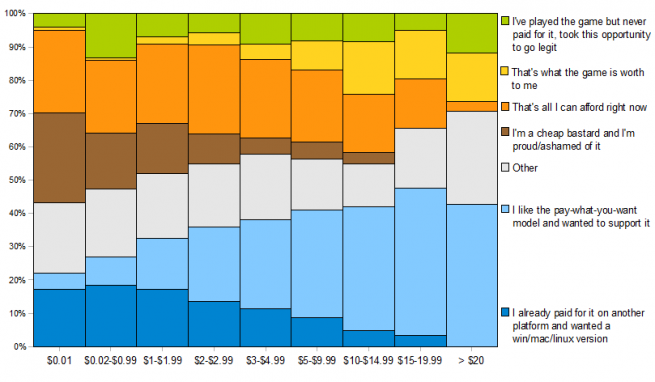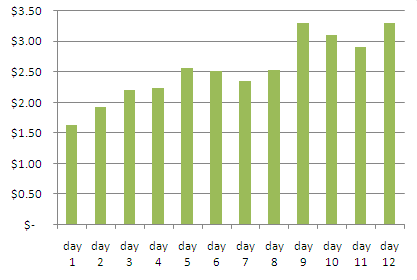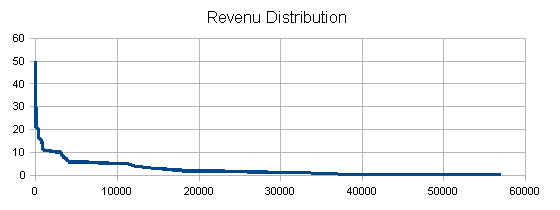World of Goo Pay-What-You-Want Birthday Sale
Contents
Producer info
- Producer: 2Dboy
- Products: video games
- Business model: traditional pay per copy
- License model: proprietary/closed?
- Community: forum, very active, no data available
Data set info
- Reference:
- Type of data: one time special event
- Dates: 2009/10/13 to 2009/10/25 (12 days)
Data
Ref. 1
| Number of people who bought the game | 57,076 |
| Average price paid | $2.03 |
| Revenue data | see File:World of Goo Pay-What-You-Want Birthday Sale.ods |
Also, the data in reference 1 includes interesting results regarding a customer survey conducted during the event. See also reference 3.
Ref. 2
There is also interesting data reagarding average donation by country and by platform.
Ref. 3
| Reasons why people chose their prices vs prices. | 
|
Analysis
Revenue curve (from ref. 1)
The multiple leveling of the curve are artifacts caused by the regrouping of prices paid into few ranges ($5 to $9.99, $10 to $14.99 and so on).
FPCF (from ref. 2)
It's not clear whether "number of people who bought the game" represents the total number of downloads (including people who paid nothing i.e. less than $0,02), or the number of people who chose to pay something among a larger number of unpaid downloads.
If 57,076 is the total number of downloads, that would means FPCF is around 70%, which is surprisingly high. If this is the case, we must get the producer's secret recipe.
Average donation increase (from ref. 2)
This is a pretty good demonstration that information can significantly affect revenu curves. It would be very informative to get complete data for both period and compare the effects on the curve characteristics.
Novelty factor
According to the survey, a significant portion of customers chose their price because they wanted to reward 2D Boy for using this business model. According to ref.3, this correspond to a novelty factor that could be boosting 2D Boy’s revenues by up to a third and, if this model becomes the norm, it’ll no longer be a novelty, and those customers will start paying what they feel is affordable. It can also be interpreted simply as an indication that a significant portion of people supports the free payment business model and are willing to contribute.

